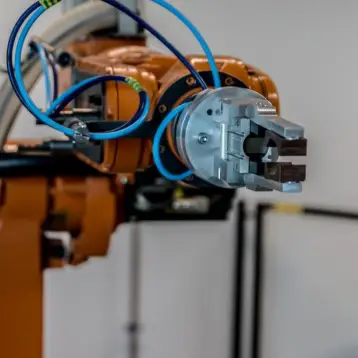The exact nature of semi-aquatic creatures’ locomotion remained obscure for many years. Scientists previously believed that the water striders create waves on the water’s surface to push themselves forward. In 1993, however, Mark W. Denny, a marine biologist from Stanford University, pointed out that newly hatched water striders are able to move across water just as well as mature water striders. Denny’s observation contradicted the popular belief about these creatures method of movement, since the young one’s legs are significantly shorter, and they cannot move them fast enough to create sufficiently strong waves. According to John W.M. Bush, Professor of mathematics at MIT and lead researcher on the Robostrider project, this phenomenon, which was named “Denny’s Paradox”, has called for “careful experimental investigation”.
Using advanced mathematics, high-speed photography, and flow visualization techniques, Professor Bush and the MIT team have finally managed to understand exactly how water striders “walk on water”. The insects use their middle legs as oars, hitting the water’s surface several times per second. Each of these strikes creates a pair of tiny whirlpools behind the strider’s legs, propelling it forward as the water’s surface flattens again.The researchers said that although waves are formed on the surface, they do not play a significant role in the momentum transfer necessary for propulsion. “The momentum transfer is primarily in the form of subsurface vortices” – they said.
Brian Chan, an MIT mechanical engineering graduate student, designed and built the Robostrider, a mechanical water strider. Chan’s water strider is able to travel the distance of half its body length with each stroke at the water’s surface. Just like its living counterpart, the Robostrider performs rowing motions in order to transfer momentum and push itself further across the surface. The first design of the Robostrider was a simple wire shaped like a water strider. The scientists say this prototype was constructed for the sole purpose of proving that a metal object denser than water could be supported by water tension. Robostrider II was equipped with an actuation mechanism – a thin elastic band wrapped around a pulley connected to the rowing legs. The third and final version of the robot is a more accurate model of live water striders, incorporating actuated middle legs and four support legs. This aluminum-made strider is able to hop as far as 20 cm in five strides, using its stainless steel legs.
Bush believes the study of animal dynamics is still in its early stages. “The physics and fluid dynamics of life at the interface remain poorly understood. This is a wide-open area – this subset of the biological world is dominated by surface tension, and has been largely neglected by fluid dynamists” – he said. The scientists intend to extend their study to various types of birds, insects, and fish in an attempt to accurately characterize the hydrodynamic forces acting on their bodies.
TFOT has previously covered a similar invention – Carnegie Mellon University’s Strider-Bot, a miniature robot capable of walking on water.
You can find more information about MIT’s Robostrider here.










